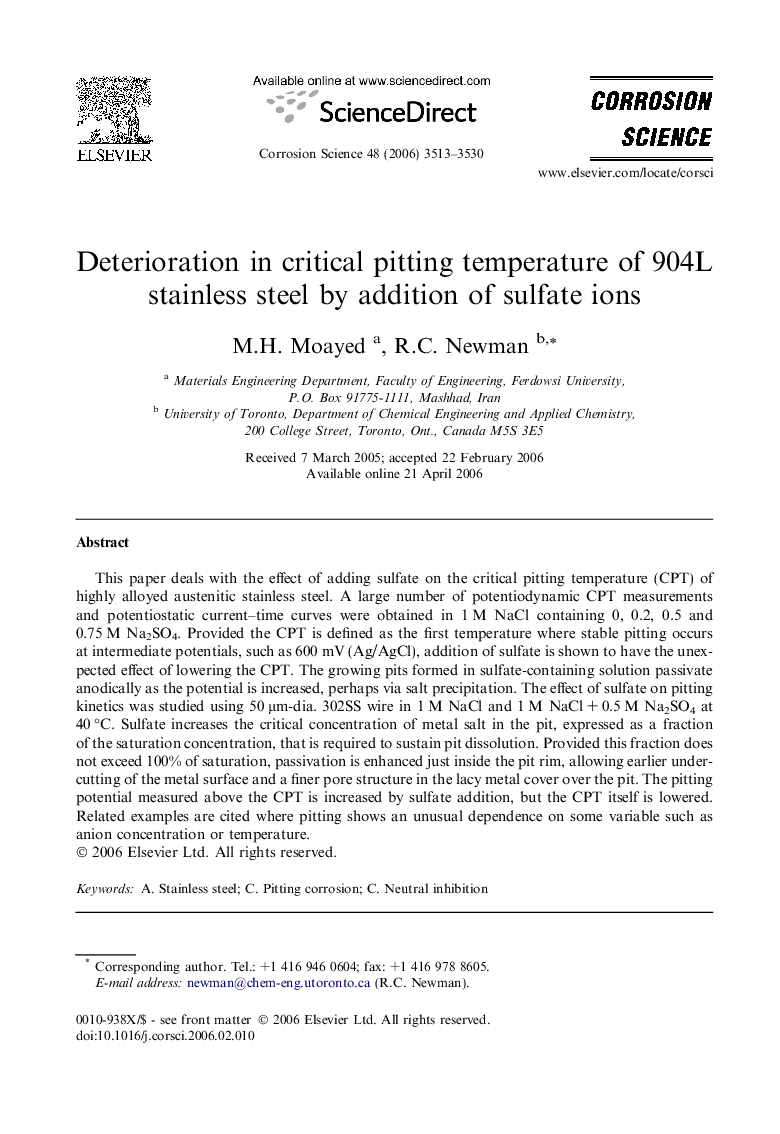| Article ID | Journal | Published Year | Pages | File Type |
|---|---|---|---|---|
| 1472303 | Corrosion Science | 2006 | 18 Pages |
This paper deals with the effect of adding sulfate on the critical pitting temperature (CPT) of highly alloyed austenitic stainless steel. A large number of potentiodynamic CPT measurements and potentiostatic current–time curves were obtained in 1 M NaCl containing 0, 0.2, 0.5 and 0.75 M Na2SO4. Provided the CPT is defined as the first temperature where stable pitting occurs at intermediate potentials, such as 600 mV (Ag/AgCl), addition of sulfate is shown to have the unexpected effect of lowering the CPT. The growing pits formed in sulfate-containing solution passivate anodically as the potential is increased, perhaps via salt precipitation. The effect of sulfate on pitting kinetics was studied using 50 μm-dia. 302SS wire in 1 M NaCl and 1 M NaCl + 0.5 M Na2SO4 at 40 °C. Sulfate increases the critical concentration of metal salt in the pit, expressed as a fraction of the saturation concentration, that is required to sustain pit dissolution. Provided this fraction does not exceed 100% of saturation, passivation is enhanced just inside the pit rim, allowing earlier undercutting of the metal surface and a finer pore structure in the lacy metal cover over the pit. The pitting potential measured above the CPT is increased by sulfate addition, but the CPT itself is lowered. Related examples are cited where pitting shows an unusual dependence on some variable such as anion concentration or temperature.
